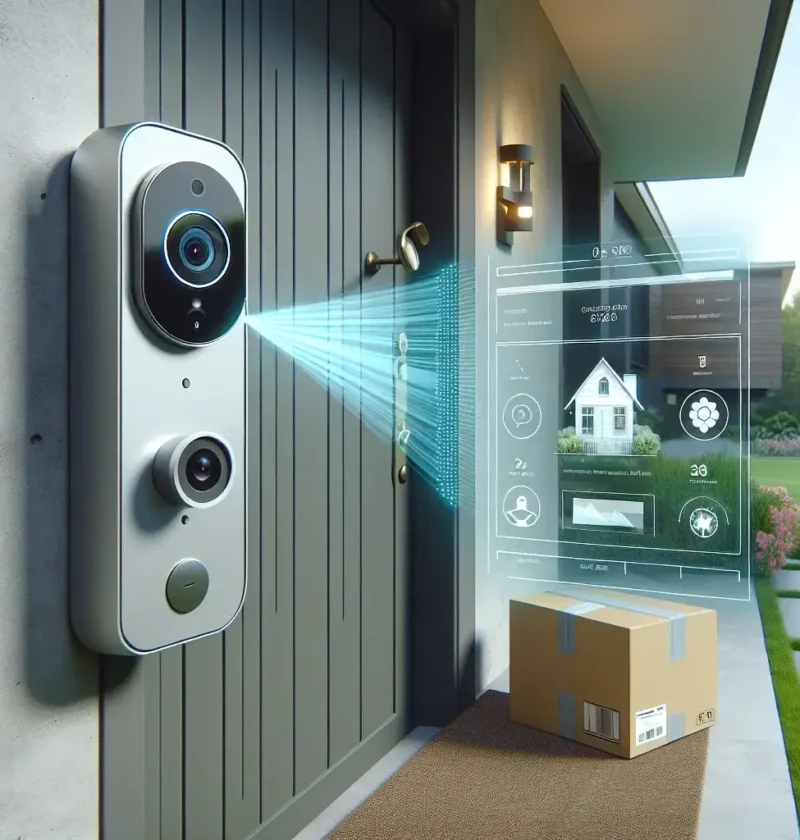Ring’s Enhanced Security: Package Recognition Arrives
Ring, a prominent player in the smart home security market, has recently unveiled a significant upgrade to its security camera lineup: package recognition. This feature, rolled out gradually across various Ring camera models, uses advanced AI to identify packages delivered to your doorstep, sending you immediate notifications. While this seemingly small addition represents a leap forward in home security, a closer look reveals a complex interplay of benefits, limitations, and ethical considerations.
The Perks of Package-Detecting Cameras
The immediate appeal of package recognition is obvious. For many, package theft is a frustrating and costly problem. With Ring’s new feature, users receive real-time alerts, allowing them to monitor deliveries and potentially deter theft. This peace of mind is invaluable for those who frequently order online or work long hours, leaving packages unattended. Furthermore, the increased awareness of delivery activity provides an added layer of general security, alerting homeowners to any unusual activity around their property.
The technology behind package recognition isn’t merely a simple motion detection upgrade. Ring’s system is designed to differentiate between a package and other moving objects, reducing false alerts. This is crucial for maintaining user experience and preventing alert fatigue. The system’s accuracy, while not perfect, is constantly improving through machine learning, adapting to various package sizes, shapes, and delivery methods. While not a complete solution to package theft, it offers a significant deterrent and provides a proactive approach to security.
Limitations and Considerations
While Ring’s package recognition offers a considerable improvement in smart home security, it’s not without its limitations. The system’s accuracy is dependent on several factors, including lighting conditions, the angle of the camera, and the clarity of the video feed. In less-than-ideal conditions, misidentification can occur, potentially leading to unnecessary alerts or, conversely, missed notifications. Furthermore, the effectiveness of the feature is directly tied to the camera’s field of view. Packages placed outside the camera’s range will, naturally, go undetected.
Privacy concerns surrounding the use of AI-powered surveillance are also important to address. While Ring emphasizes data encryption and user control over their data, the constant recording and analysis of video footage raise legitimate questions about data security and the potential for misuse. The ethical implications of ubiquitous surveillance, even within one’s own home, warrant careful consideration. Ring users should be fully aware of the data collected and how it’s utilized, taking advantage of the privacy settings available within the app.
Comparing Ring’s Package Recognition to Competitors
Ring isn’t the only company offering AI-powered security features for smart home cameras. Competitors like Google Nest, Arlo, and others are also incorporating advanced detection capabilities into their systems. However, Ring’s extensive user base and integrated ecosystem provide a significant advantage. The seamless integration with other Ring devices and the comprehensive app interface contribute to a user-friendly experience. A direct comparison between different platforms would require an in-depth analysis of each system’s strengths and weaknesses, including factors like accuracy, reliability, and overall user experience. Choosing the right system depends on individual needs and preferences.
The Future of AI-Driven Home Security
Ring’s package recognition feature is just one example of the rapid advancements in AI-powered home security. As AI technology continues to evolve, we can anticipate even more sophisticated features emerging in the coming years. More accurate object recognition, improved threat detection, and more context-aware security systems are on the horizon. The integration of AI with other smart home technologies, such as smart locks and lighting systems, will likely lead to even more comprehensive and automated security solutions. This future, however, necessitates a continuous dialogue about ethical considerations and data privacy, ensuring these powerful technologies are used responsibly.
The development of these advanced security systems also raises questions about the potential displacement of human security personnel. While AI can augment security measures, it’s unlikely to completely replace the need for human oversight and intervention. The role of humans in security will likely evolve, focusing on tasks requiring critical thinking, complex problem-solving, and human judgment, areas where AI currently lags.
A Professional’s Perspective: Weighing the Pros and Cons
From a professional standpoint, Ring’s package recognition is a welcome advancement, but it’s crucial to maintain a balanced perspective. The benefits in terms of increased security and peace of mind are undeniable, but the limitations and potential drawbacks must also be acknowledged. Implementing such technology requires a thoughtful approach, prioritizing user privacy and data security. While the technology shows promise, it’s essential to avoid overreliance on any single security solution. A multi-layered approach, combining technological safeguards with traditional security measures, remains the most effective strategy.
Furthermore, the long-term implications of widespread adoption of AI-driven security systems need careful consideration. The potential for misuse, the ethical concerns surrounding data privacy, and the impact on individual freedoms are issues that require ongoing discussion and debate. As consumers, we have a responsibility to understand the technologies we incorporate into our lives and to advocate for responsible innovation.
In conclusion, Ring’s addition of package recognition to its security cameras represents a notable step forward in smart home security. While offering numerous benefits, it’s important to consider the limitations, privacy implications, and the broader context within the evolving landscape of AI-driven security. A well-informed and cautious approach is essential to harnessing the power of this technology while mitigating potential risks.
For further information on data privacy in connected devices, you may wish to consult the Federal Trade Commission or Privacy International.

